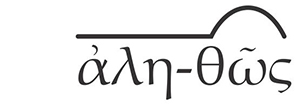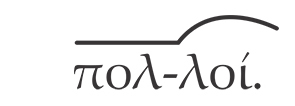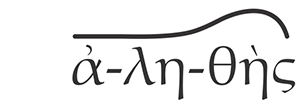.jpg)
.jpg)
Three types of accents are used: the acute, the circumflex, and the grave. Why three? Does each of them affect intonation in any specific way?
According to ancient grammarian Dionysios of Halicarnas, a musical pitch of one 5th is assigned to accented syllables...
Some nowadays manuals say that we are not obliged to try to reproduce vocally the musical modulations of Ancient Greek....
Other manuals say that no difference should be made between the three types of accents, because musical pitch accent has been replaced in time by a stress accent: we should ordinarily pronounce them alike, by stressing the accented syllable, as in English...
Therefore, simply applying more intensity to the accented syllable would be enough for the student who reads ancient texts aloud...
We are told that pitch accents are not used anymore in languages such as Latin, English, Modern Greek, and most of modern languages...
My impression, however, is that every language today has some musicality when spoken: anyone who tries to apply just more intensity to accented syllables with no change of the pitch would probably produce a kind of 'robotic' speech.
The explanations below are not the result of any rigorous linguistic study, but a mere personal opinion on how the rules found in grammar books could be applied in practice by the student.
The use of the different types of accent is probably related to preserving proper articulation; this can be easily seen in the explanations given in Lesson II. For example, the accent cannot be placed back in a position beyond the antepenult syllable. When accenting a word, we may imagine that this is like gathering energy in order to accomplish the aim of properly articulating the word. Supposing one places the accent farther back than the antepenult, one would be left without enough "energy" to adequately pronounce the last syllables. Then, in the process of inflection, for example, if a short ultima becomes long, the accent moves by one syllable closer to the end of the word - for instance, ἄνθρωπος - ἀντθρώπου. This also suggests that proper application of accents is in close relationship with proper speech articulation.
The pitch rises progressively on the accented syllable and then drops in the same manner to the initial level, within the same syllable, as described in the graphics below.

We may liken the acute to a circumflex which extends its effect over two syllables. The pitch rises at the beginning of the accented syllable, progressively but relatively sharply, and then it drops over the subsequent syllable (or over the pause which is inherent with a punctuation mark) less sharply, as suggested in the graphics below. In the second case (final word of a sentence), it should be common sense to drop the pitch to some extent only - not completely to the initial level; there is then enough room/pause to start the new word from the normal pitch level.


The effect of this type of accent is similar to the acute, as described above, except that the rising and dropping angles of the pitch reverse, and the extension of accent goes backwards (towards the syllable before the accented one), as suggested in the graphics below.

The three types of accent appear to be similar to one another; the main difference is that the circumflex consumes its effect within one syllable, whereas the other two extend their influence over two syllables.

A sample text is given below, indicating how the pitch accent may function. In reality, of course, the pitch of accented words would combine with the pitch of the phrase intonation; however, before considering this aspect, a separate description (as attempted above) should be given for the pitch accent of individual words (as it should also be the case when phrase intonation is discussed).
